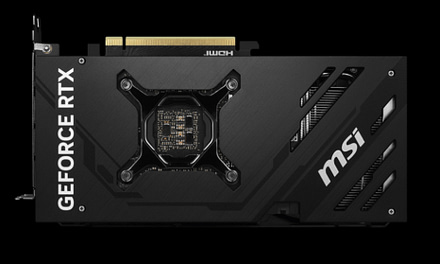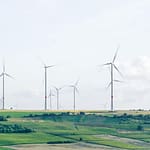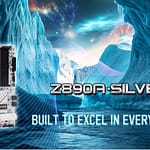The Different Types Of Power Electronics And How They’re Useful
You have probably heard the term ‘power electronics’ before, but what does it mean? Power electronic circuits and systems convert electrical energy from one form to another more useful form. They can be used in a range of industries, from transportation to medical. Power electronic devices are a vital component in the electric industry. Without them, our homes would not have been equipped with all of the appliances we use every day to keep us comfortable and productive. The different types of power electronic devices available range from transformers and inverters to battery chargers and motor controller drivers (MOSFETs). In this article, we will take a look at some of the most common types.
DC to DC Converters
A DC to DC converter is a type of power electronic device that converts direct current (DC) electricity into an alternating current (AC), inverting the supply voltage. It does this by either changing the voltage or changing the frequency, depending on what needs to be done. They are used in various industries for different purposes including electric vehicles, car batteries, scanners, DVD players, and printers. You can find DC to DC converters in most electronic devices that require an external power supply (e.g., cameras, cellphones). If you need a specific converter for your industrial application, the best way to get a quote on DC to DC converters is to get in touch with industrial manufacturers. Based on your requirements they will be able to provide you with a quick quote so you can make the right decision for your application.
AC to DC Converter
An AC to DC converter (also known as an inverter) is one of the most common types of power electronic devices. These are similar to DC to DC converters in that they convert AC into DC power. There are two types of AC to DC converters, off-line and on-line. Off-line converters are more common, with the larger power appliances (e.g., TVs) using them. They’re also used in smaller devices such as scanners, printers, laptops, modems, and cellular phones. Another reason for their popularity is that they don’t require a transformer or any type of special design with filters or capacitors. These have several benefits including being compact, having low noise levels, easy to control, and being less expensive than online models. Online inverters are more suited for applications requiring high power ratings due to having the ability to produce higher voltages.
AC to AC Converters
An AC to AC converter is an inverter that converts alternating current (AC) into alternating current. The input voltage frequency and voltage are the same, but the output voltage and frequency may be different than the input. This type of power electronic device can produce both voltages (e.g., 220 V, 400 V), unlike DC to DC converters which can only produce one predetermined voltage or frequency). They are typically used in commercial appliances such as computers, monitors, printers, etc. For instance, the frequency of power in Japan is 60 Hz while it’s 50 Hz in Europe. With AC to AC converters, these appliances can be used on any electrical system and don’t require a converter. These are typically used with high-end appliances that need a certain voltage and/or frequency (i.e., welding machines).
Solar Inverter
Solar inverters convert DC from solar panels into AC for household use. This enables people who rely on solar energy to use power such as washing machines, water heaters, dishwashers, microwaves ovens, etc. Although they may seem like simple devices, they work by changing the direct current (DC) into alternating current (AC) at a certain voltage, frequency, or both. The output AC power from a solar inverter is typically the same as the input DC power from the solar panels. To calculate how many solar panels you need for your project, it’s best to get in touch with an industrial manufacturer who can help you with this calculation by providing a quick quote on your requirements.
Transformer
A transformer is another common type of power electronics device that transfers electrical energy safely from primary to secondary circuits. It’s made up of two or more coils wound around a single magnetic core. components are what gives them their name. There are two types of transformers: step-up and step-down (or isolation). Mainly, they are used in telecommunications, lighting circuits, transmission equipment, power supplies, or production engineering for converting voltages. For example, a step-down transformer is used to reduce the voltage from a distribution level to a service level. To choose the right kind of transformer for your application, it’s best to get in touch with industrial manufacturers who can help you find the one that’s right for you by providing a quick quote on your requirements.
Battery Charger
A battery charger is an electronic device that charges batteries using electrical energy from mains (e.g., AC), other chemical reactions (e.g., fuel cells), or other sources. The different types of chargers available range from low voltage to high voltage systems, with the latter being highly regulated due to safety considerations when it comes to charging cars, forklifts, or submarine batteries, etc. Three types of battery charger designs include constant voltage/constant current (CV/CC), constant voltage/variable current (CV/VC), and constant current/constant voltage (CC/CV).
Voltage Control Devices
One of the most common types of power electronic devices used in applications requiring low-voltage control is voltage control devices (also known as MOSFETs). These are transistors that have a channel formed between two terminals and a control terminal on top of the channel. They work by allowing current flow between the source and drain when there is no voltage on the control terminal. When voltage is applied to the control terminal, it blocks current flow. The main types of MOSFETs available include enhancement-mode (normally-on), depletion-mode (normally off), and dual n-channel (normally off).
Motor Controller Driver
Motor controller driver power electronic devices are used in electric vehicles for controlling electrical components such as motors, batteries, LEDs, sensors, etc. They also come with various functions including chopper/inverter operation, temperature monitoring, speed or torque control, etc. For example, a sensorless motor controller has special features that make it ideal for applications requiring accurate torque command generation even during fault conditions like stalled commutation or an open circuit condition.
Power electronic devices and systems play a vital role in getting power where and when it’s needed. Understanding different types of power electronic devices are key to choosing the best one for your application. However, If you’re looking to build or upgrade your system, remember it’s best to get in touch with industrial manufacturers who can help you find the right power electronic device for you by providing a quick quote.













